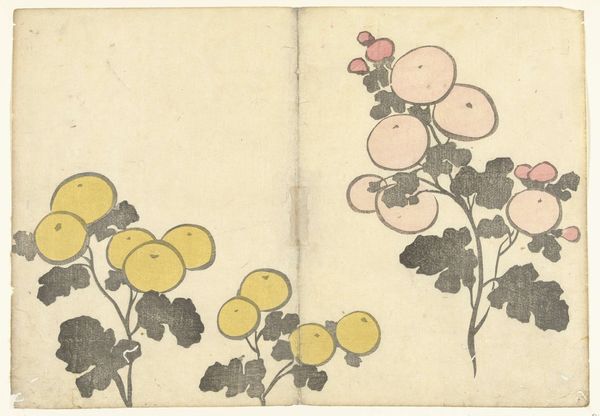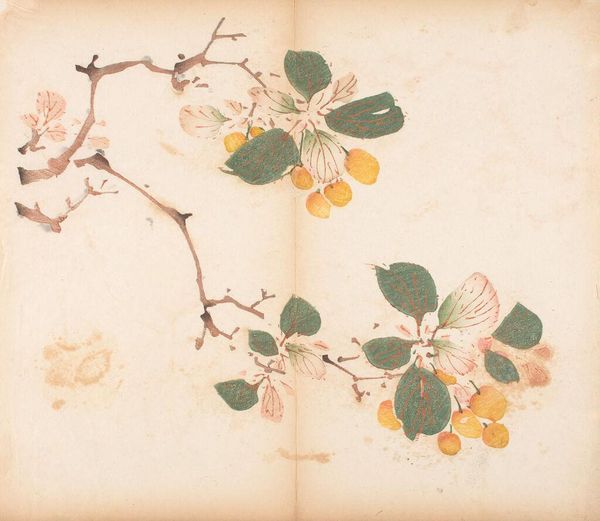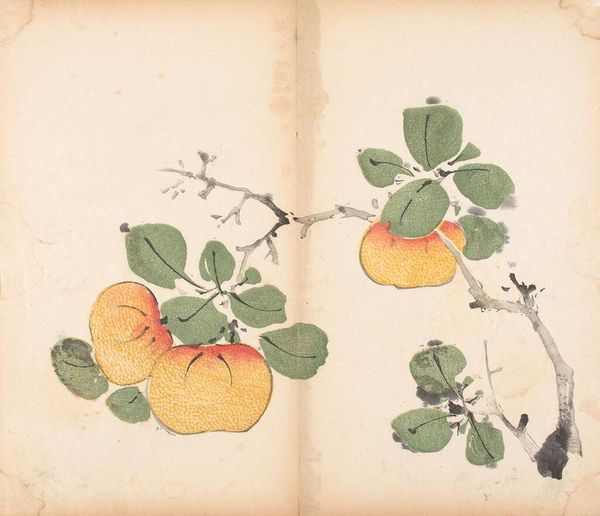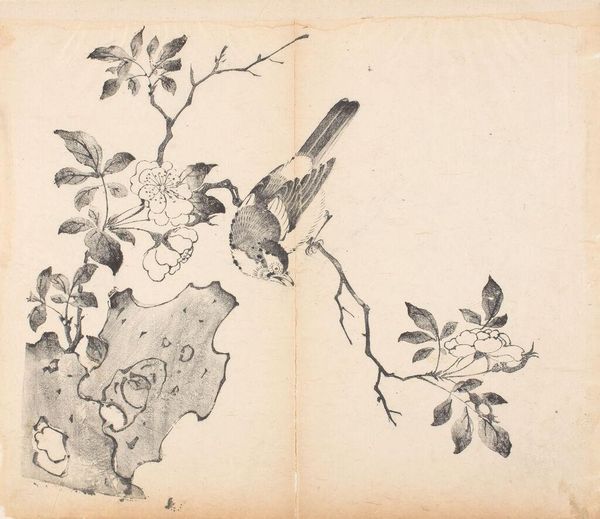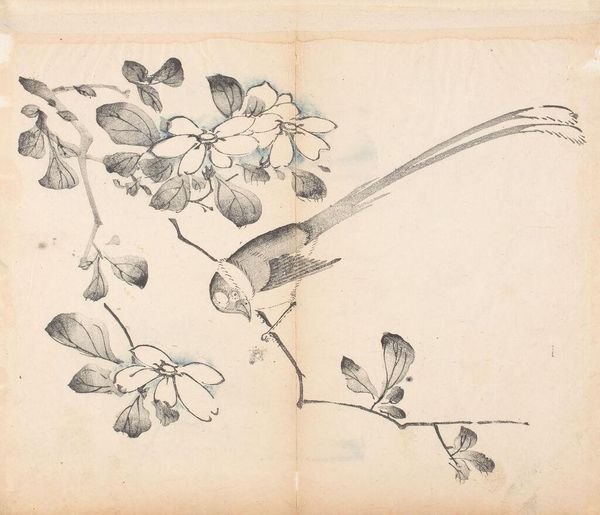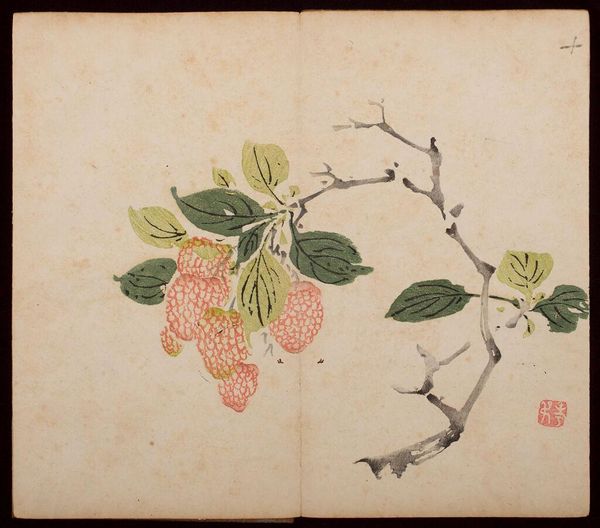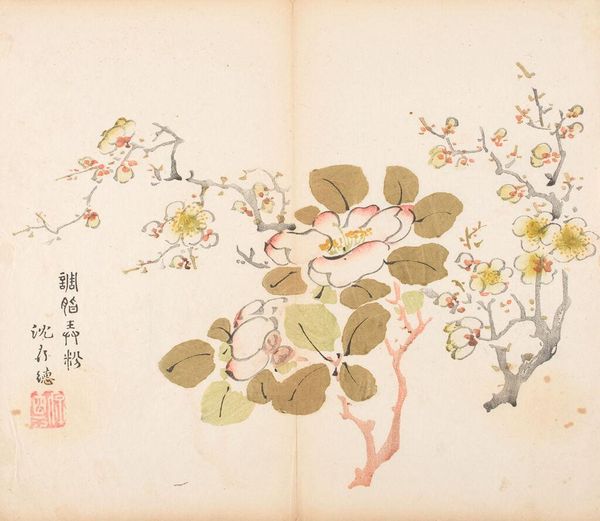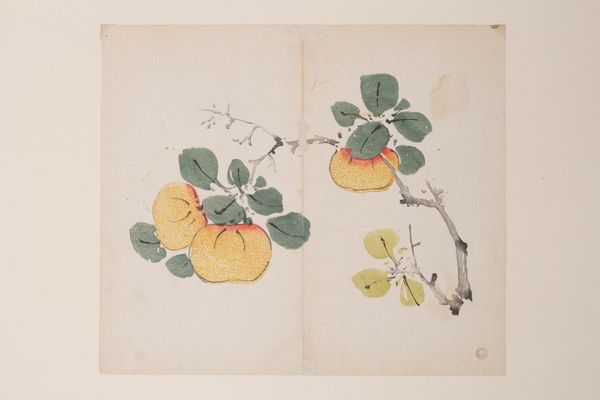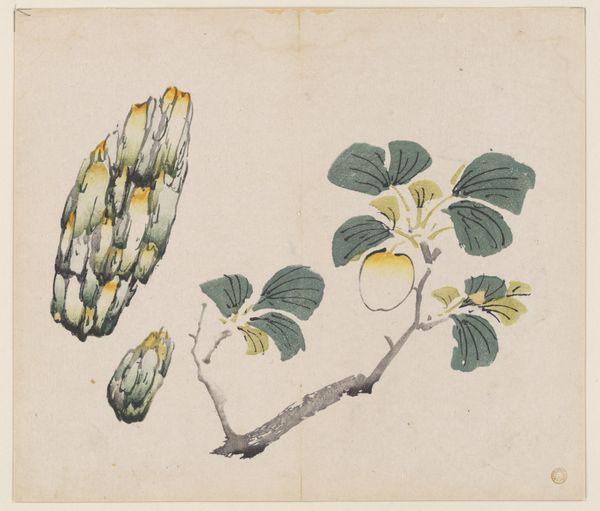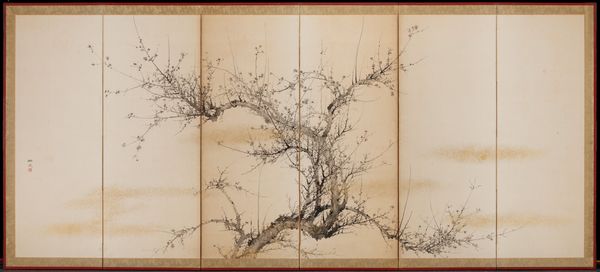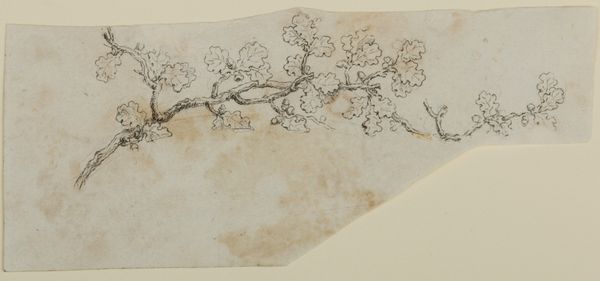
drawing, watercolor, ink
#
drawing
#
organic
#
asian-art
#
ukiyo-e
#
japan
#
watercolor
#
ink
#
watercolour illustration
#
watercolor
Dimensions: 3/16 x 11 7/16 x 8 13/16 in. (0.5 x 29 x 22.4 cm)
Copyright: Public Domain
Curator: Here we have a page from a sketchbook by Matsumoto Kōzan, created around 1864. The artwork offers a glimpse into the natural world, showcasing organic elements. Editor: It's deceptively simple, isn't it? I'm drawn to the spare quality of the watercolor, how the thin washes of ink define the shapes of the fruit and leaves without feeling heavy or overworked. You can almost feel the paper. Curator: Precisely. This work aligns with the Ukiyo-e tradition, reflecting a common theme of finding beauty in the everyday, and a larger tradition of sketchbooks in Japanese painting. It gives you the feeling of observing something private, something casual yet refined. It's an interesting document within a certain sector of society at the time. Editor: When looking at this, I also think about what informed Kōzan's selection of materials, or perhaps the restrictions he faced at the time. Consider what type of ink was available to him or what he was expected to have as his color palette? Also, who commissioned these artworks? These choices certainly shaped what this sketchbook could and would eventually become. Curator: That's an insightful perspective. There's often a perceived hierarchy between a "finished" painting meant for display and sketches meant as studies. But these sketchbook pages have such charm, almost because of their intimate scale and casual nature. You can feel his process here. Editor: Agreed. And what’s striking is that Kōzan achieved an extraordinary refinement within such modest means. These kinds of practices also elevate what might be viewed as the realm of the everyday – papermaking, ink production – to a central role in the artwork. Curator: Overall, Kōzan’s sketchbook page invites a closer look, showing how everyday subjects, approached with sensitivity and skill, provide us with a window onto Japanese society and aesthetics during the 19th century. Editor: Absolutely, by focusing on these types of mediums and means of production, this becomes less about some ethereal notion of Japanese aesthetics and more about something grounded, and real.
Comments
No comments
Be the first to comment and join the conversation on the ultimate creative platform.
